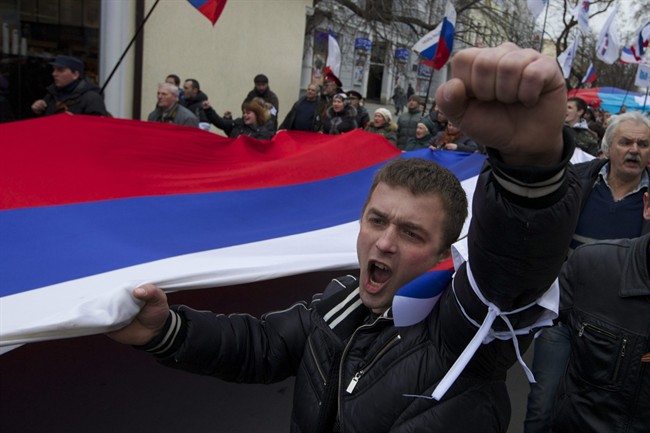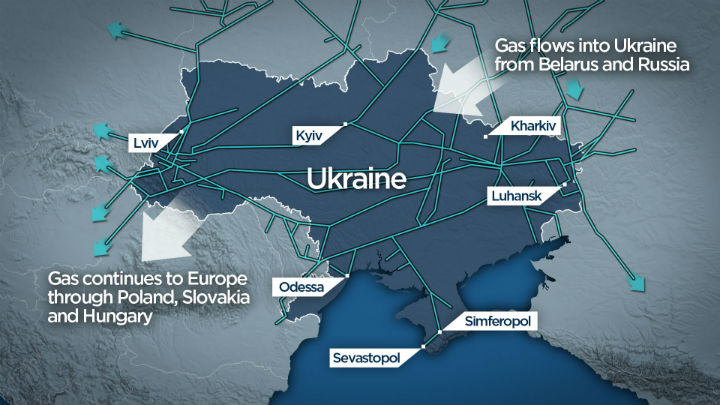Maps can help you understand a lot about what’s going on in certain situations. Here are three maps that help explain the politics, pipelines and key places involved in the Ukraine crisis.

Where in Crimea does Russia have troops?
Russia has effectively seized control of Ukraine’s strategic Crimean peninsula without firing a shot, but many in Ukraine and elsewhere fear the Kremlin might follow up by sending troops into Russian-speaking regions of eastern Ukraine. Such a move could trigger open hostilities between the Russian and Ukrainian militaries.
Forces of Russia’s Black Sea Fleet based in Crimea and additional Russian troops sent to the peninsula have seized or blocked Ukrainian air bases, air defence missile batteries and other military facilities, and garrisons throughout the region. Ukraine’s military acknowledged that “practically all” of its military facilities in Crimea have been surrounded or taken over.
READ MORE: A look at Russian, Ukrainian militaries
READ MORE: BLOG: Who does Putin think he’s protecting Crimea from?
- 16-year-old child of billionaire tech CEO reported missing
- U.S. tourist faces 12-year sentence for bringing ammo to Turks and Caicos
- Canada refused to repatriate woman from ISIS camp because she can’t be arrested: internal memo
- Bombardier, Airbus get exemptions from Canadian sanctions on Russian titanium
How divided was Ukraine in the 2010 election?
Former president Viktor Yanukovych and his Party of Regions won the 2010 election, largely because of support in the western part of the country, beating then Prime Minister Yulia Tymoshenko by more than three percentage points.
Yanukovych and his Party of Regions were declared the winners of the election, with 48.95 per cent of the popular vote, on Feb. 14, 2010, while Tymoshenko and her Bloc Tymoshenko party earned 45.47 per cent of the votes.
Tymoshenko appealed the results three days later, but then withdrew the appeal on Feb. 20.
Yanukovych took office on Feb. 25. On Feb. 22, 2014, just three days shy of the fourth anniversary of his inauguration, Ukraine’s Parliament voted to impeach the 63-year-old and later charged him with the mass murder of anti-government protesters.
Russian-speaking areas in eastern and southern Ukraine showed their support for Yanukovych, while Tymoshenko claimed victory in all of the country’s western provinces.
READ MORE: How Crimea Peninsula differs from the rest of Ukraine
READ MORE: Putin’s intention is to annex parts of Ukraine
Where in Ukraine does Russian gas flow through?
Right now, the pipelines flow west from Russia and into Romania, Hungary, Slovakia and Poland. But there are plans for the routes to extend further and take fuel onwards to Italy, Austria and Germany – the biggest consumer of Russian fuel.
READ MORE: Who has economic interests in Ukraine? It’s not just Russia
Global stocks tumbled Monday as tension over Russia’s military advance into Ukraine and possible sanctions by Western governments intensified.
Oil surged above $104 per barrel on concern Russian supplies might be disrupted. Gold was up 2.1 per cent to $1,349.30 an ounce on safe haven buying.
READ MORE: Global stocks tumble as Ukraine tensions intensify
*The maps above were created by Global News based on information reported by the New York Times. This accompanying information was compiled with files from The Associated Press and Global News.






Comments